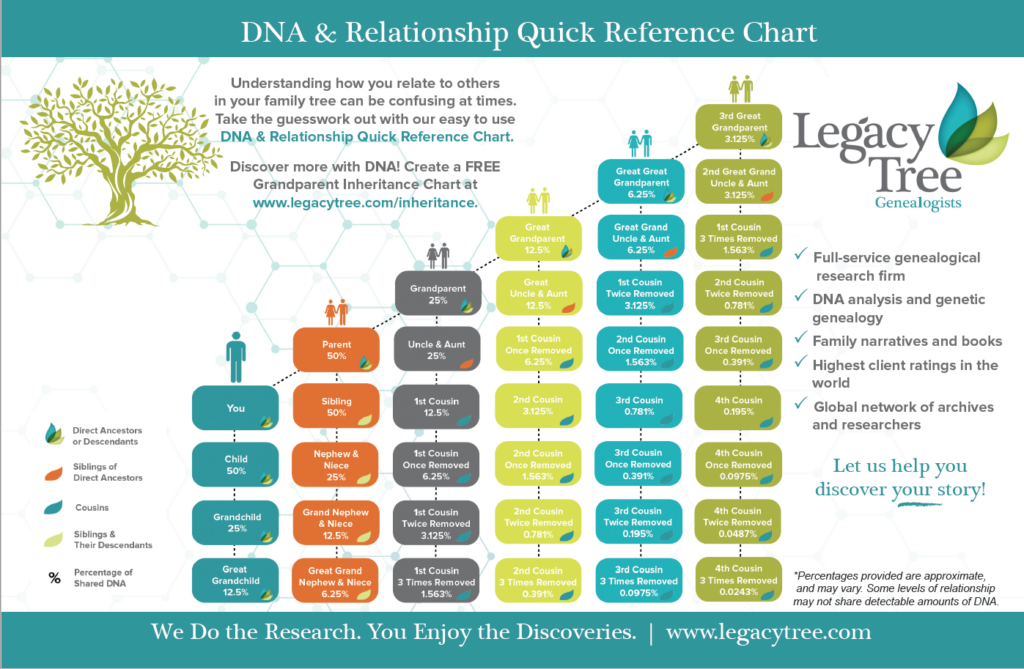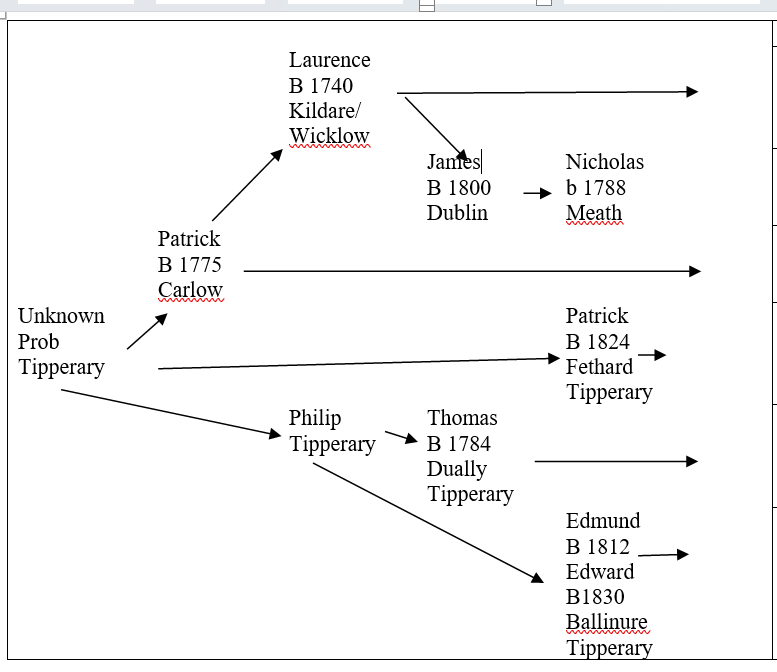DNA Research
DNA testing has become much more cost effective, informative and useful in recent years.
Nearly everyone — with rare exceptions — is born with 23 pairs of chromosomes that were passed down from parents through combinations of their 46 chromosomes.
X and Y, the two most popularly known chromosomes, are part of the 23rd pair of chromosomes. They’re also called the sex chromosomes because they determine what biological sex you’re born with.
The rest of the 22 pairs are called autosomes. They’re also known as autosomal chromosomes. Autosomes and sex chromosomes contain a total of about 20,000 genes.
The male Y chromosome contained in a DNA sample is passed down the male line virtually intact. Thus, if two male DNAs closely match then it can be scientifically proven that these people are related.
The typical types of DNA tests are:
- Autosomal DNA. This refers to the 22 pairs of non-sex chromosomes that everyone inherits equally from their biological parents – approximately 50% from each. This DNA is a random mixture of both parents’ genetic material, which they in turn inherited from their parents. Autosomal DNA testing can be taken by both biological males and females. Because of the random recombination during inheritance, full siblings will have different admixtures of autosomal DNA.
- Y DNA. This test provides information about the paternal ancestry line. Because it tests the Y chromosome, which women don’t have, it’s only available to men, although, women can still derive helpful details from the DNA tests of their fathers, uncles or brothers, for instance.
- mtDNA. This test provides information about the maternal ancestry. Both male and female children inherit mitochondrial DNA, but only females can pass it on to their own children.
The relationship chart below is a helpful way of depicting DNA relationships.

There are two main types of commercial organisations that conduct and analyse these tests. These are. Ancestry.com and FamilyTreeDNA. These are discussed below and the DNA matches from each organisation are outlined.
Ancestry.com
Ancestry.com, 23 and Me and My Heritage have similar offerings and they produce very similar reports. I have used www.ancestry.com. (Note that in March 2025, 23 and Me went into Administration).
Ancestry.com results have shown a DNA connection between Tree # 1 and:
- Tree # 7, which originates from North Tipperary,
- Tree # 9, which originates from the same Tipperary area as Tree # 1,
- Tree # 11, which originates from Drangan/Fethard area,
- Tree # 12, which originates from Cashel area,
- Tree # 22, which originates from South Kilkenny area.
Initially I also had Tree # 10 however I proved a link between Trees # 1 and 10 and have merged these two trees. Any references to Tree # 10 in the documentation should be read as Tree # 1.
The markers that are tested change quite quickly and these tests and the results are really only accurate when tracing back between 5 and 7 generations. After this time period the DNA gets too diluted.
These results are explained more at the Ancestry.com page.
FamilyTreeDNA
FamilyTreeDNA.com offer tests:
- Autosomal DNA. This is tested using the Family Finder product and the tests determine the segments of DNA is shared with everyone you’re related to.
- Y DNA.
- mtDNA.
Autosomal DNA tests survey a person’s entire genome at over 700,000 locations. It covers both the maternal and paternal sides of the family tree, so it covers all lineages. Chromosome tests reflect the direct father-to-son path in your family tree, and the mtDNA test only reflects the direct mother-to-child path in your family tree.
The FamilyTreeDNA autosomal tests produce tables of Short Tandem Repeats (STRs) and these can show linkages that can go back much further than the results shown by ancestry.com. This is explained more in the FamilyTreeDNA page.
I have tested several family members and the results and analysis can be see at the FamilyTreeDNA page. It shows a link between Tree # 1 and:
- Tree # 9, which originates in the same Tipperary area as Tree # 1
- Tree # 6, which also originates in same Tipperary area as Tree # 1,
- Tree # 15, which originates from County Carlow,
- Tree # 3, which originates from Kildare/Wicklow area,
- Tree # 18, which originates from Dublin,
- Tree# 17, which originates from Meath.
The chart below shows the probable movement of the families as shown in the FamilyTreeDNA page:

FamilyTreeDNA also produces reports on the Haplogroup of each tester. Haplogroups pertain to a single line of descent. As such, membership of a haplogroup, by any individual, relies on a relatively small proportion of the genetic material possessed by that individual. Each haplogroup originates from, and remains part of, a preceding single haplogroup (or paragroup). This is explained further at Haplogroup – Wikipedia
The relevant groups for us are shown at Haplogroup RM-198, Haplogroup I-M223 and Haplogroup RM-343.
Haplogroup RM-198 relates to the only German Hayde I have tested. The other two Haplogroups relate to Irish families. Haplogroup I-M223 is the most prominent. It is Viking in origin and most Haydes tested are from this group. There are a few Haydes in Haplogroup RM-343 and some of these have paper traces to those in I-M223.
Gedcom
This is a tool that matches DNA results from different testing companies. No results from Gedcom have added to anything outlined above.
Summary
As outlined in the Irish Research page, the original 10 Tipperary families in 1666/7 are shown in the map below. From here, families moved north to Kilkenny, Carlow, Kildare, Wicklow, Dublin and Meath.

DNA testing has proven a link between families 5, 6 and 7, plus 9 and 10.
Further work is required to identify descendants and undertake DNA tests from families 1, 2, 3 and 4.